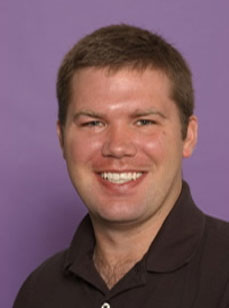When I signed up for the academic portfolio workshop offered by the Koehler Center for Teaching Excellence, my goal was to begin preparing my file for promotion and tenure. In the course of preparing my portfolio with the assistance of a mentor, however, I realized that the process of preparing the portfolio and the narrative that accompanies it would help me improve as a teacher and a researcher. Since completing the program, I have served as a mentor to others over three summers. My work as a mentor has reaffirmed this initial view. The academic portfolio program at TCU provides an excellent opportunity for faculty to create an evidence-based collection of their work that assists them both in preparing materials for review by their peers and administrators and to self-evaluate their strengths and areas for improvement.
The portfolio is a fairly straightforward collection of materials that demonstrates an individual’s research, teaching, service, and other professional accomplishments. For an individual preparing for promotion, the portfolio can be assembled to conform to her college’s particular formatting requirements. Others may configure the portfolio more broadly with more comprehensive documentation from which materials may be drawn for other purposes – my own portfolio followed this latter model. Regardless of how materials are arranged, the most important part of assembling the portfolio is the construction of the personal narrative.
The narrative is the part of the portfolio that allows an individual to reflect on his or her teaching, research, service and goals. While this may seem relatively straightforward, the key to constructing the narrative is to ensure that each component is well documented and explained. The narrative includes sections on teaching philosophy and methods. In preparing this section, individuals are asked to think about specific examples of how they put their philosophies into practice. Similarly, the narrative provides an opportunity to discuss teaching evaluations, including an explanation of how the individual uses teaching evaluations for improvement. In discussing research, individuals are able to highlight particularly notable publications as well as to put their overall research into perspective. The section on service affords the opportunity to discuss contributions on campus, in the community, and to the profession in a way that may not be apparent in annual reports. Finally, the goals section is not simply a wish list of things one hopes to accomplish; rather, it is a statement of three or four items that can be reasonably accomplished, including concrete timelines for achieving them.
The narrative provides a moment for reflection for the author. Rather than simply writing a statement of teaching philosophy and methods, by asking for evidence the narrative requires the careful consideration of how classes are constructed and why certain strategies are used. Compiling evaluations across semesters also allows for the careful consideration of patterns in student and, where applicable, peer evaluations. Similarly, discussions of research helps to identify strategies for publication that have succeeded in comparison to those that have not. A similar process allows individuals to consider the totality of their service over time.
Key to this process is working with the mentor, normally a faculty member in another department or college who has previously completed the portfolio workshop. The mentor serves to help us see things we may not see ourselves, including patterns in our work and relationships between different areas. The mentor also provides a sounding board. Since mentors are from different disciplines than mentees, they are able to provide an outside perspective on a candidate’s file and may be able to suggest different ways to present material to an outside audience.
In my personal experience, the portfolio workshop helped me evaluate my progress as a professor at TCU. When I went through the process, I had experienced good teaching evaluations and was making service contributions, but my research productivity was lacking. The portfolio process helped me to improve in all areas. Examining my teaching and explaining why I used the methods I did to my portfolio mentor helped me to understand better why the techniques I used worked and ways that I could make them better. Discussing my service made me realize that I could better prioritize my commitments and, something that I found difficult, ask for help in certain areas where I had been reluctant to do so. Finally, in evaluating my research and my goals, I realized how unfocused my goals had been. The production of the portfolio required me to explain not only what I hoped to accomplish, but also how I was going to do it.
Since completing the portfolio, I have learned the value of returning to it at least once a year. By returning to the narrative, I can make a personal evaluation of what I have accomplished and where I can improve. It is a constant reminder that our careers are works in progress. Most rewarding for me, however, has been serving as a mentor in the program. As noted above, I have worked with individuals from several different departments across campus. This has enabled me to see firsthand what amazing faculty members we have at TCU. It has also allowed me to see the techniques for success my colleagues have employed, further allowing me to reflect on ways I can improve.
The portfolio process is valuable. While it is helpful in preparing one’s file for promotion and tenure, its value extends far beyond this objective. It is an opportunity for reflection and development as a faculty member.

This article was written by Eric Cox, PhD, Political Science, for the Spring 2013 Issue of Insights Magazine.